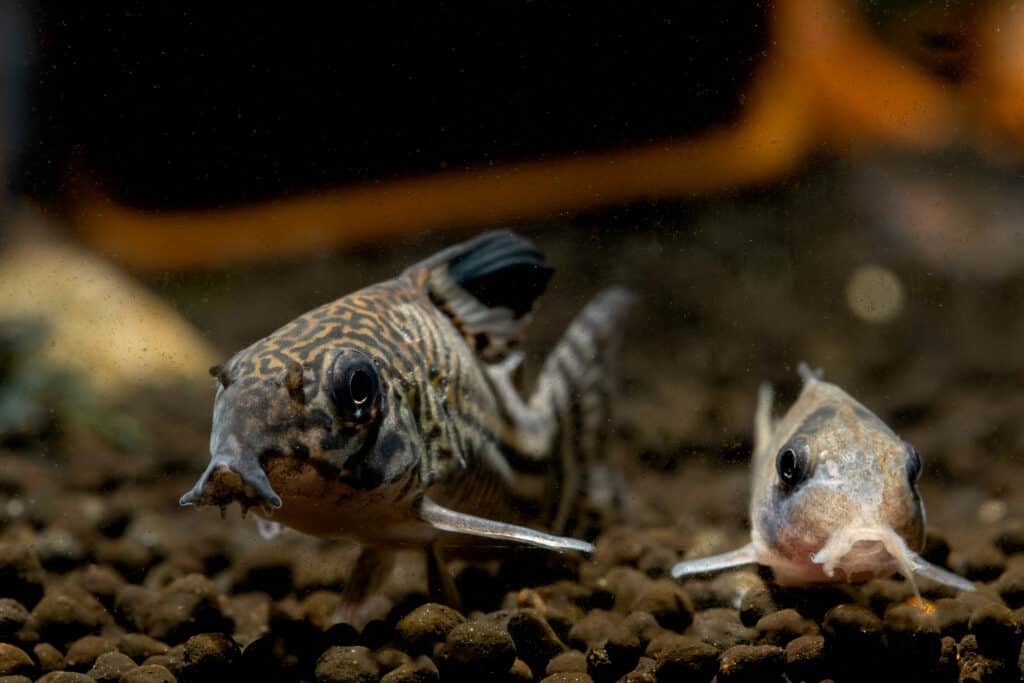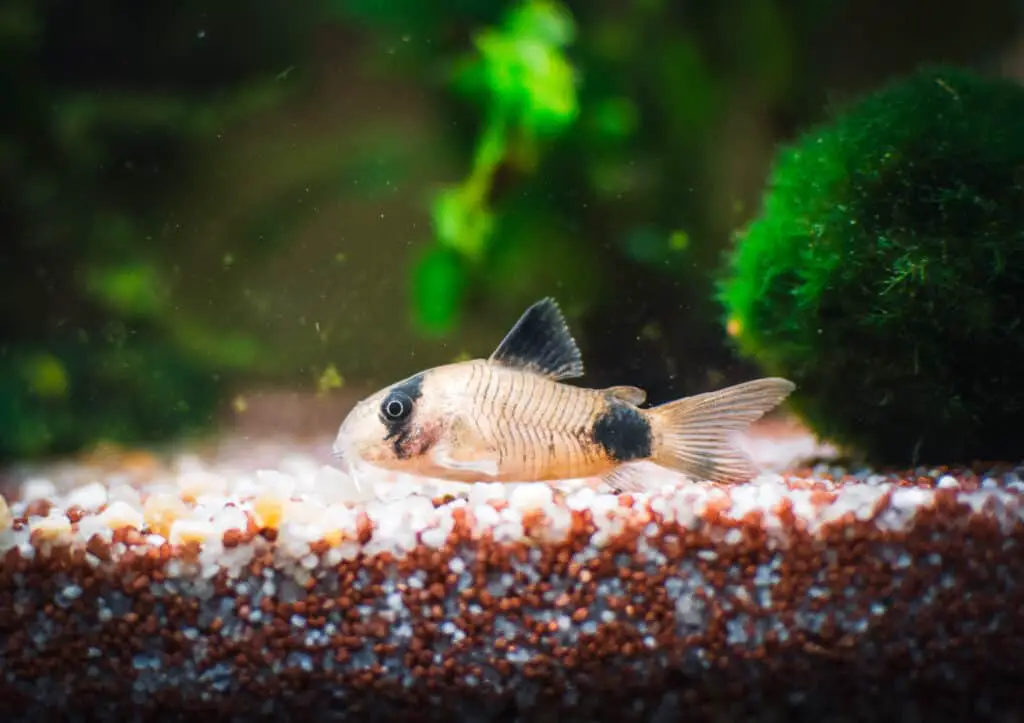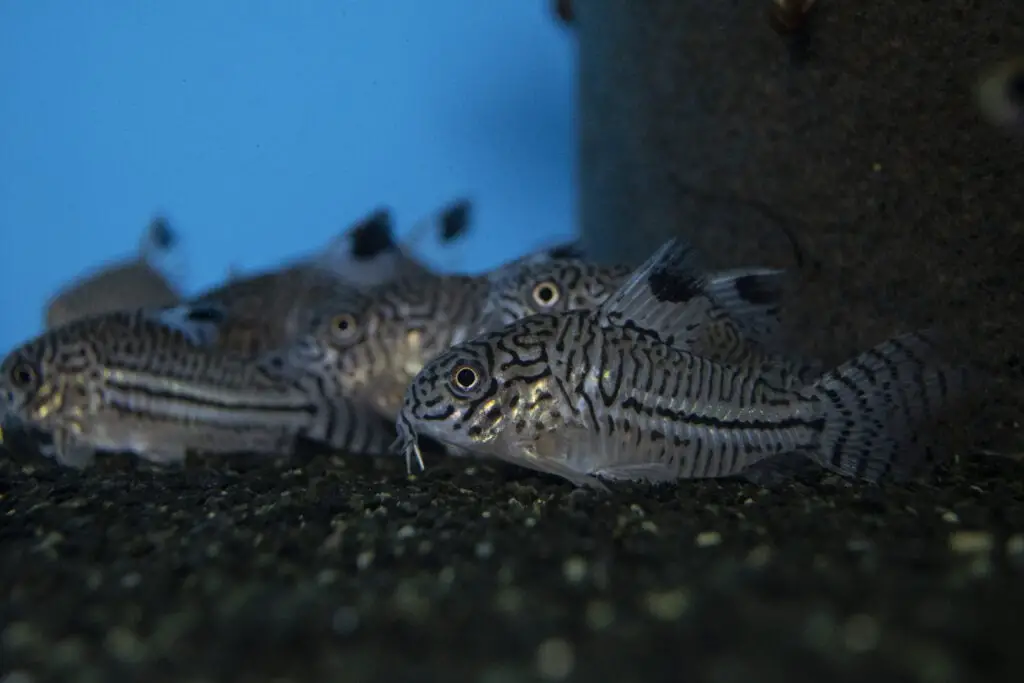
Corydoras are considered a staple within the fish-keeping hobby, their unique, intriguing personalities, and peaceful nature, have had these fish captured the heart of many aquarium enthusiasts, and made these fish one of the best choices for a bottom dweller.
But with over 160 recognized species, it can be very difficult to choose only one.
This is where the question can arise on if more than one species of corydoras can be kept in the same tank, and still have a thriving, and harmonious tank environment.
Multiple species of corydoras can be kept in the same tank with great success.
Some aquarists may consider avoiding this if they have specific goals, such as breeding for specific lines, selling to avoid cross-breeding, and or when tank size can come into question.
However, with those two caveats not in play, different species will coexist, and be able to thrive together.
Let’s dive deeper into why different types of corydoras can coexist with each other, as well as what considerations should be made if you have specific goals for your tank, such as breeding.

Why are Different Species of Corydoras Compatible?
To know if different corydoras species can coexist, it is important to understand the very nature of how they can.
Peaceful Nature
One of the major proponents of this is the very nature of how corydoras interact and live in a tank.
Corydoras are very peaceful, which allows them to not only coexist with different corydoras species but almost in fish that can be placed in an aquarium.
They will typically be seen scavenging for food, sifting through the substrate for nutrition, in general leaving other tank inhabitants completely alone.
They are also very social creatures that prefer to be in groups, where they will swim together, rather than alone.
This should be considered with the size of your tank, as you will see the different species swimming together on occasion, but in general, they will be seen with their own.
Because of this, if you are considering adding multiple species of corydoras to your tank, it would be advisable to ensure getting at least 3 to 5 of each of the species.
Similar Tank Requirements (Parameters and Size)
Being of the same family, the different species of corydoras will generally require the same water parameters.
This will make it easier to find pairings of these fish, as water parameters will not be as high as a concern.
Each species will be possibly at different ends of the spectrum, be it temperature or pH preferences, but they will all be able to adapt within those ranges.
They also enjoy much of the same setup, some will prefer more plants, and others open space, but again, being of the same family will be able to adapt, the substrate will also be of the same preference as their feeding behavior will be generally the same.
Tank dimensions will also be similar in needs, in terms of wanting to have greater bottom surface area, compared to the height of the tank.
Most, if not all corydoras species will spend their time at the bottom of the tank, and providing ample space on the bottom is very vital in creating a great environment for the corydoras.
Tanks that are wider and deeper or of more value when choosing one to house corydoras, which is the same for all of these species.
It is generally recommended for all corydoras species to have at least a 20-gallon tank, this recommendation will increase based on the number of fish you want to house in your tank.
A good rule of thumb, though not concrete, is the 1 inch of adult fish size per gallon of water your tank can hold.
So if you want to have multiple species of the larger variety your tank size needs will be greater, than having two of the smaller species.
To learn more about the ideal environment for Corydoras, read my article here.
Similar Dietary Needs
As mentioned before, corydoras for the most part will feed, and eat mostly the same things.
Foraging in the substrate and through the tank, looking for leftover food.
Being scavengers by nature, they will eat almost anything given to them, making them great to pair together.

Why You Might Avoid Combining Corydoras Species
There are situations where, though the species of corydoras are compatible, it may not be the best decision for you, or be ideal for the fish themselves. Here are some things to consider:
Desire to Breed Your Corydoras
The biggest reason to avoid combining species is if your goal is to breed a particular species.
Being of the same family, the different species will cross-breed with each other.
In general, the goal when breeding is to keep the lines pure with a single species, if you have a combination of species it will be nearly impossible to know what the offspring genes are, and keeping this from happening is only possible by keeping only one species.
Limited Tank Space
Tank size on the other hand is something that should be given some forethought, based on the different species.
This is because the different species do have a wide variation in how big they get, with the smaller species only getting to an inch in full-grown size, and the larger varieties being able to get up to 5 inches.
What this difference does is emphasize the tank size requirements, as larger types will require more room.
This is not to say that smaller tanks cannot have multiple corydora species, but that smaller corydoras species would be needed as they would require having multiple species to have them in their ideal environment.
If you are limited on tank space, either from the physical size you can have, or the area you can designate for your tank, having a single species of corydoras may be found to be the better choice.
Final Thoughts
Understanding what you desire for your tank is one of the most important aspects of knowing if combining Corydoras species is right for you.
Be sure to also consider the tank size you have available to you to help narrow down what species will work best for you in your particular situation.
But overall you can combine different corydora species, and they will be able to coexist and live harmoniously in a tank.
Having a combination of corydoras in your tank can be one of the best to add life and personality to the bottom of your tank.
